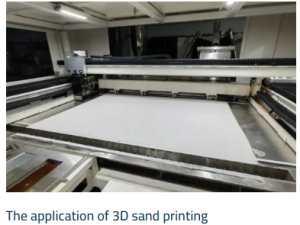Rapid Turnaround Time
CNC is known for what design can be turned into the prototype in no time. A traditional prototype can take weeks, months while CNC machines produce complex prototypes within hours or days. This quick turn around is critical for industries that need rapid product development cycles, giving companies the ability to iterate and improve their designs faster, more than ever.
High Accuracy and Precision
In prototyping precision is of utmost importance and all CNC machines give it, by unit. Because CNC prototyping has the capacity to hold tolerances to.005 inches, the prototypes created will be precise and true to your design. It is indispensable to carry out the practical tests and validations with such precision levels to minimize the risks of the product failures that may exist by virtue of the difference in between the prototype and the design.
Material Versatility
Produce various detail parts using a wide variety of materials—from metals, to plastics, and composites—with CNC machines. This material versatility means designers and engineers can now choose the best material for their prototypes according to the desired properties, and performance requirements. Whether it be a common consumer electronics case plastic or a heavy duty aerospace metal, CNC prototyping supports it all.

Good for Low Volume Production
CNC prototyping can be quite cost-effective for small volume production. CNC manufacturing is more flexible and cost-effective than mass production methods it does not require expensive molds or tooling. — — A CNC machine can perform the task with one shot, which is suitable for the production of one item or 1000 units of a given element with no additional setup. This feature is particularly useful for startups and small businesses that desire a fully functional prototype, with none of the overhead of traditional production methods.
Enhanced Design Flexibility
CNC is considered one of the most flexible methods for prototype design. Digital designs can be changed by engineers at a moments notice, and CNC machines can rapidly regenerate fully functional iterations of these designs. Provided this flexibility, it allows for a lot of experimentation of design variations, which often makes the difference in the early stages of product development and innovation.
Integration with CAD Software
CNC machines have now been fully integrated with Computer-Aided Design (CAD) software to further simplify the prototyping process. Designers can literally send their CAD models to the CNC and have it create an exact real-world prototype from the digital model. The result is fewer sources of human error and increased confidence that the prototype is consistent with the design contained in its CAD model.
CNC Prototyping: Final Thoughts
CNC prototyping quickens the development of product design while at the same time strengthening prototype work quality and feasibility. The advantages of this style make it a very essential device in the new manufacturing age supporting innovation and efficiency across different sectors.
Concluding Remark
CNC prototyping is a rapid prototyping process that adds speed and versatility to the product development lifecycle of any material, making it economical and quick to manufacture due to its excellent performance capabilities. This allows a very competitive advantage especially in industries where time-to-market and product performance speaks for itself.